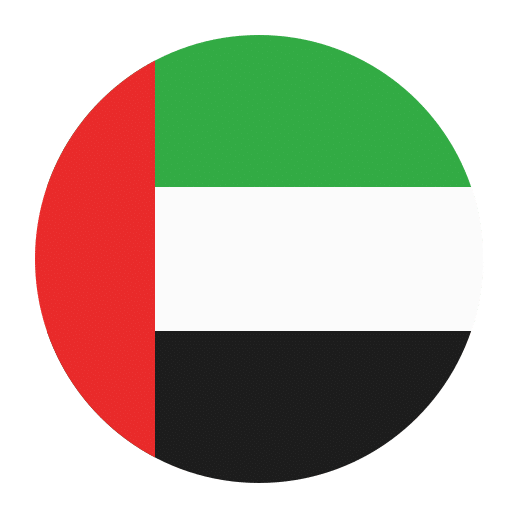In our increasingly interconnected world, learning a new language is more accessible and essential than ever. Arabic, one of the world’s most spoken languages, offers a window into a rich and diverse culture that spans multiple countries in the Middle East and North Africa. As with any language, immersion is a crucial component of effective learning. One of the most effective ways to immerse oneself in the Arabic language is through the rich tapestry of Arabic media. From television shows and movies to news outlets and social media, Arabic media provides a plethora of resources that can significantly impact language learning for English speakers.
The Role of Arabic Media in Language Acquisition
Television and Movies
Television and movies are some of the most engaging and accessible forms of media for language learners. Arabic TV shows and films can provide context for vocabulary and grammar that textbooks might not offer. By watching Arabic media, learners are exposed to the natural flow of the language, including colloquial phrases, idiomatic expressions, and various dialects. This exposure helps learners understand how the language is used in everyday situations, making it easier to grasp nuances and subtleties.
For example, watching an Egyptian soap opera can introduce learners to the Egyptian dialect, which is widely understood across the Arab world due to the popularity of Egyptian media. Similarly, tuning into a Lebanese drama can help learners become familiar with the Lebanese dialect. Subtitles in both Arabic and English can further aid in comprehension and retention, allowing learners to match spoken words with written text.
News Outlets
Arabic news outlets, such as Al Jazeera, Al Arabiya, and BBC Arabic, offer another valuable resource for language learners. News segments cover a wide range of topics, from politics and economics to culture and sports, providing a comprehensive vocabulary base. Moreover, news anchors typically speak in Modern Standard Arabic (MSA), the formal version of the language used in official documents, literature, and formal communication across the Arab world.
Listening to news broadcasts helps learners improve their listening skills and familiarize themselves with MSA’s pronunciation and syntax. Additionally, reading news articles online or in print can enhance reading comprehension and expand vocabulary. Many news websites also offer video clips with transcripts, allowing learners to read along as they listen, which can reinforce understanding.
The Influence of Social Media
Interactive Learning
Social media platforms like Facebook, Instagram, Twitter, and YouTube have revolutionized language learning by providing interactive and engaging content. Arabic language learners can follow influencers, join language learning groups, and subscribe to channels dedicated to teaching Arabic. These platforms offer a mix of formal and informal language, giving learners a well-rounded understanding of how Arabic is used in different contexts.
For instance, YouTube channels such as “Learn Arabic with Maha” and “ArabicPod101” provide structured lessons on grammar, vocabulary, and pronunciation. Instagram accounts like “Arabic Word of the Day” offer bite-sized language lessons and cultural insights. Twitter can be a great platform for following news outlets, language teachers, and Arabic-speaking celebrities, allowing learners to see how the language is used in real-time communication.
Cultural Exposure
Social media also provides a unique window into the cultural nuances of the Arabic-speaking world. By following Arabic-speaking users and engaging with their content, learners can gain insights into cultural practices, traditions, and current events. This cultural context is essential for understanding idiomatic expressions, humor, and social norms, which are often difficult to grasp through formal study alone.
Moreover, social media allows for real-time interaction with native speakers, providing opportunities for language practice and feedback. Engaging in conversations, asking questions, and participating in discussions can significantly enhance language proficiency and confidence.
Music and Podcasts
Music
Music is a powerful tool for language learning, as it combines rhythm, melody, and repetition to make vocabulary and phrases more memorable. Arabic music, with its rich traditions and diverse genres, offers a fun and engaging way to learn the language. From classical Arabic music to contemporary pop, learners can explore different styles and dialects.
Listening to Arabic songs and following along with the lyrics can improve listening skills, pronunciation, and vocabulary. Many songs also incorporate poetic language and cultural references, providing deeper insights into the language and culture. Websites like LyricsTranslate offer translations of Arabic songs, helping learners understand the meaning and context of the lyrics.
Podcasts
Podcasts are another excellent resource for language learners, offering a range of content from language lessons to cultural discussions. Arabic podcasts such as “Arabic with Sam” and “Arabic Language and Culture” provide structured lessons and tips for learning the language. Other podcasts, like “Kerning Cultures” and “The Arabic We Speak,” offer stories and discussions that immerse learners in the language and culture.
Listening to podcasts can improve comprehension and expose learners to different accents and speaking styles. Many podcasts also provide transcripts or show notes, allowing learners to read along and reinforce their understanding.
Challenges and Solutions
Dialect Diversity
One of the challenges of learning Arabic through media is the diversity of dialects. Arabic has numerous regional dialects, and the spoken language can vary significantly from one country to another. This diversity can be confusing for learners who may struggle to understand different accents and vocabulary.
To address this challenge, learners can start by focusing on Modern Standard Arabic (MSA), which is understood across the Arab world and used in formal media. Once they have a solid foundation in MSA, they can gradually explore regional dialects through specific media sources. For example, they can watch Egyptian movies to learn the Egyptian dialect or listen to Lebanese podcasts to become familiar with the Lebanese dialect.
Finding Quality Content
With the vast amount of Arabic media available, finding high-quality content that matches the learner’s proficiency level can be challenging. It is essential to choose resources that are engaging, accurate, and suitable for the learner’s skill level.
Learners can seek recommendations from language teachers, fellow learners, and online language learning communities. Many language learning apps and websites also curate lists of recommended media resources. It is also helpful to use media that provides subtitles or transcripts, as these can aid comprehension and reinforce learning.
Consistency and Practice
Like any language learning endeavor, consistency and practice are key to success. Engaging with Arabic media regularly, even for short periods, can significantly improve language skills over time. Setting aside dedicated time for watching TV shows, listening to podcasts, or reading news articles can help learners stay motivated and make steady progress.
Joining language exchange programs or finding a language partner can also provide regular practice and accountability. Engaging in conversations with native speakers, whether online or in person, can reinforce learning and build confidence.
Conclusion
The impact of Arabic media on language learning is profound and multifaceted. By immersing themselves in the rich and diverse world of Arabic media, learners can enhance their language skills, gain cultural insights, and make the learning process more enjoyable and effective. From television shows and news outlets to social media and music, the wealth of resources available provides endless opportunities for practice and growth. While challenges such as dialect diversity and finding quality content exist, with the right approach and dedication, learners can harness the power of Arabic media to achieve their language learning goals.

